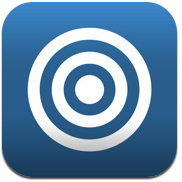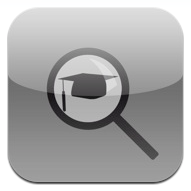Our workshop on “iPhone/iPad Human Interface Design” held at the 6th Symposium (USAB 2010) of the Workgroup HCI&UE of the Austrian Computer Society in Carinthia (Southern Austria) is now online available.
First of all you will find the slides for the workshop design, afterwards the two presentations for the theoretical input:
[iPhone App] SciFinder wird “App der Woche”
 Wir freuen uns über eine kleine Auszeichnung unsere Bemühungen im Forschungsgebiet “Research 2.0“. Die von Alexander im Rahmen seiner Masterarbeit entwickelte App – SciFinder – erhielt von der Redaktion telefon.de, den “App der Woche” Award.
Wir freuen uns über eine kleine Auszeichnung unsere Bemühungen im Forschungsgebiet “Research 2.0“. Die von Alexander im Rahmen seiner Masterarbeit entwickelte App – SciFinder – erhielt von der Redaktion telefon.de, den “App der Woche” Award.
Stolz sind wir vorallem, dass auch Apps die nicht dem Spielegenre oder ähnlichem zugehörig sind, gewählt werden. Wie immer freuen wir uns auf Rückmeldung 🙂 für die nächste Version.
[video] Future Mobile Phone Concept
Hm – wir haben schon vor Jahren auf dem Nokia bewegungsgesteuere Eingabe ausprobieren können und ja ich bleib skeptisch. Klar erscheint der Ansatz das Mobiltelefon mit einer Hand zu steuern innovativ und reizvoll, aber letztendlich find ich das nicht einen so wesentlichen Schritt. Wieviele Situationen gibt es wirklich wo ich mit einer Hand steuern muss bzw. dies den entscheidenden Vorteil bietet? Mir fällt nur das Autofahren ein, aber da sollten wir ja generell keine Mobiltelefone bedienen.
[iPad App] Indicate
 Die nächste App unserer Studierenden ist im AppStore gelandet: Indicate. Es ist gleichzeitig auch die erst Applikation für das iPad und macht unserer Meinung nach die Zeitung der Zukunft sehr greifbar, indem man nehme seine persönlichen RSS-Feeds nimmt und darauf seine tägliche, ganz persönliche Zeitung bekommt. Wir gratulieren nochmals dem Programmiererteam für diese schöne App.
Die nächste App unserer Studierenden ist im AppStore gelandet: Indicate. Es ist gleichzeitig auch die erst Applikation für das iPad und macht unserer Meinung nach die Zeitung der Zukunft sehr greifbar, indem man nehme seine persönlichen RSS-Feeds nimmt und darauf seine tägliche, ganz persönliche Zeitung bekommt. Wir gratulieren nochmals dem Programmiererteam für diese schöne App.
Tired of hopping around between websites checking what’s new? Indicate brings it all together in one place.
Set up your favourite websites and upon a single tap Indicate will gather new stuff from these websites and convert it into a newspaper style print layout. The technology behind it is called RSS and is available all over the web.
Features:
- Enriched with cover pictures
- Organize websites in Categories
- Read full articles directly within the app
- Open articles and links in Safari
- Organize your newspapers in the archive
- Choose from a collection of preset websites
- Browse for new websites within the app
[iPhone app] SciFinder
 Im Rahmen einer Diplomarbeit rund um das Thema “Profiling” – also was kann man automatisiert über Personen finden im WorldWideWeb – ist diese iPhone App entstanden: SciFinder. Das Ziel ist die Suche nach wissenschaftlich tätigen Personen zu vereinfachen, deren Profil abzuspeichern und so letztendlich die Kontaktaufnahme zu erleichtern:
Im Rahmen einer Diplomarbeit rund um das Thema “Profiling” – also was kann man automatisiert über Personen finden im WorldWideWeb – ist diese iPhone App entstanden: SciFinder. Das Ziel ist die Suche nach wissenschaftlich tätigen Personen zu vereinfachen, deren Profil abzuspeichern und so letztendlich die Kontaktaufnahme zu erleichtern:
SciFinder ist eine einfach zu bedienende App mit der Wissenschafter und andere Personen im Internet gesucht werden können. Die App kombiniert:
- Suchen auf Google nach Webseiten und Bildern,
- eine Suche nach Papers und anderen Publikationen auf Google Scholar und
- Suchen nach einer Person auf Facebook und Twitter.
Die App kann die gefundenen Links der Person speichern und wenn erwünscht einen neuen Kontakt im Adressbuch für diese Person anlegen.
Hier kann die App downgeloadet werden [Link] und alle weiteren verfügbaren Apps der TU Graz findet man hier [iTunes Link].
[presentation] @twitter Mining #Microblogs Using #Semantic Technologies
Our presentation on “@twitter Mining#Microblogs Using #Semantic Technologies” at this year 6th Workshop on Semantic Web Applications and Perspectivesis now online available.
The publication has already been published here.
[presentation] Twitter research at World Computer Congress
A big thank to Steve who gave both presentations about our Twitter research at the World Computer Congress:
- All I need to know about Twitter in Education I learned in Kindergarten
- Get Granular on Twitter – Tweets from a Conference and their Limited Usefulness for Non-Participants
Furhtermore he put also the slides online:
[publication] @twitter Mining#Microblogs Using #Semantic Technologies
Our publication on “@twitter Mining#Microblogs Using #Semantic Technologies” at this year 6th Workshop on Semantic Web Applications and Perspectives is now online available.
Abstract:
In this paper we report about our current and ongoing research efforts aiming at knowledge discovery, offline social data mining and social entity extraction based upon semantic technologies. Further we are aiming to provide the scientific architecture paradigm for building semantic applications that rely on social data. In this early stage our work focuses on data from Twitter as currently most popular and fastest growing microblogging platform. In the realm of our research we implemented applications like Grabeeter for storing searching and caching the social data and STAT infrastructure that uses semantic standards like RDF (SIOC, FOAF), SPARQL and existing semantic services as Sinidice and Linked Data silos as DBPedia or GeoNames as well. They represent parts of novel architecture paradigm for semantic social applications intended to be introduced here.
Reference: Softic, S.; Ebner, M.; Mühlburger, H.; Altmann, T.; Taraghi, B., (2010) @twitter Mining #Microblogs Using #Semantic Technologies, in: 6th Workshop on Semantic Web Applications and Perspectives (SWAP 2010), p. 1 – 12, https://www.inf.unibz.it/krdb/events/swap2010/page10/page10.html (last access Oct. 2010)
[presentation] @twitter Try out #Grabeeter to Export, Archive and Search Your Tweets
Our presentation about “@twitter Try out #Grabeeter to Export, Archive and Search Your Tweets” for this year ECTEL-Conference is now online. We will talk about our application concerning the export of tweets and the offline searchability: Grabeeter. Slides which are presented within the Workshop Research 2.0:
[publication] All I need to know about Twitter in Education I learned in Kindergarten
Our publication at this year World Computer Congress about “All I need to know about Twitter in Education I learned in Kindergarten” is now online as draft version available.
Abstract:
Share everything.
Play fair.
Don’t hit people.
Put things back where you found them.
Clean up your own mess.
Don’t take things that aren’t yours.
Say you’re sorry when you hurt somebody.
Wash your hands before you eat.
Flush.
Warm cookies and cold milk are good for you.
Live a balanced life – learn some and think some and draw and paint and sing and dance and play and work every day some.
Take a nap every afternoon.
When you go out into the world, watch out for traffic, hold hands and stick together.
Be aware of wonder.
Reference: Reinhardt, W., Wheeler, S., Ebner, M. (2010), All I need to know about Twitter in Education I learned in Kindergarten, N. Reynolds and M. Turcsányi-Szabó (Eds.): KCKS 2010, IFIP AICT 324, pp. 322–332, 2010
